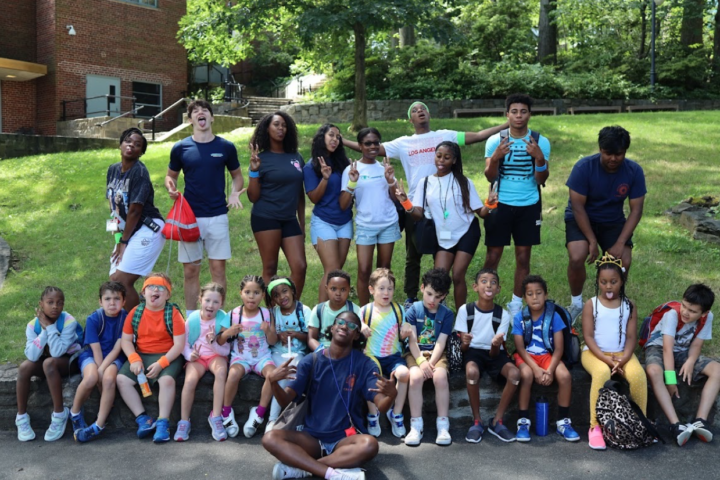I spent a large portion of my summer in Washington, D.C. with the School For Ethics and Global Leadership (SEGL), a semester school popular within the Fieldston community. While there, I studied a number of topics such as arms trafficking, gentrification, foreign policy and philosophy. There was one lesson, however, that I found particularly interesting, and it involved a historical monument.
On June 27, my classmates and I descended upon Lincoln Park, home to the historic and controversial Emancipation Memorial, also known as the Freedman’s Memorial.. Our lesson started out simple; we were to walk around the statue and observe it, candidly, refraining from judgment. “I see one figure standing and another one kneeling,” I wrote in my notes. After some time, we gathered and discussed what we wrote before studying the statue again. This time we were allowed to think about what we saw. “It looks like Abraham Lincoln is standing over a formerly enslaved person,” my next entry read. Our class spent three hours outside that morning, fighting off the D.C. summer heat as we discussed, debated and observed the statue.
The statue, we learned, was conceived of shortly after Lincoln’s assassination in April 1865, three days after the Confederate surrender, and served as a memorial to him. Designed by Thomas Ball, and installed in 1876, it features Lincoln standing over a formerly enslaved person, kneeling but rising, shackles broken, fist clenched, as Lincoln holds the Emancipation Proclamation. There is a plaque, describing how the memorial was funded entirely by the wages of formerly enslaved people, now citizens of The United States of America. Specifically, most of that funding came from African-American Union veterans.
Our assignment was then to create a short presentation answering a question our teacher had posed for us: What should be done with the statue?
To answer this question, we had to balance a number of factors. On one hand, the depiction of Lincoln standing over a kneeling African American man perpetuates racial inequalities: “What message might this send to the children we saw earlier that day, playing right in front of the statue?” Concurrently, the statue is a historical artifact made possible by the contributions of formerly enslaved people, the group that the statue appears to undermine. Frederick Douglass was the keynote speaker at the statue’s unveiling, and although that fact may imply his support in favor of the monument, he wrote a letter just five days later criticizing the statue’s design.
As we prepared our presentation in what little time we had, a question hit me: Who are we to argue about what should happen to this statue? We were just a bunch of high school students who first saw the statue only hours ago. But questions about what to do with America’s historic statues remain, and someone has to decide what to do with them. One day, that could be us investigating those questions. So, how can we prepare for such instances?
As students at Fieldston, we possess the luxury of access to an educated and thoughtful community of peers, teachers and advisors with whom we can discuss the problems that face our world today. But sometimes, it takes going beyond roundtable discussions and lunchtime meetings to fully understand such issues. Sometimes you have to experience things firsthand.
Perhaps I am a sucker for more field trips and get-your-hands-dirty types of activities – after all, one of my most memorable Fieldston experiences was a trip I took last spring to CPAC. But it is in these new environments, where I feel uncomfortable and removed from the solace that our campus provides, that I have learned the most. And if there is one takeaway I have from my summer in Washington, D.C., it is how valuable being in those environments is.









